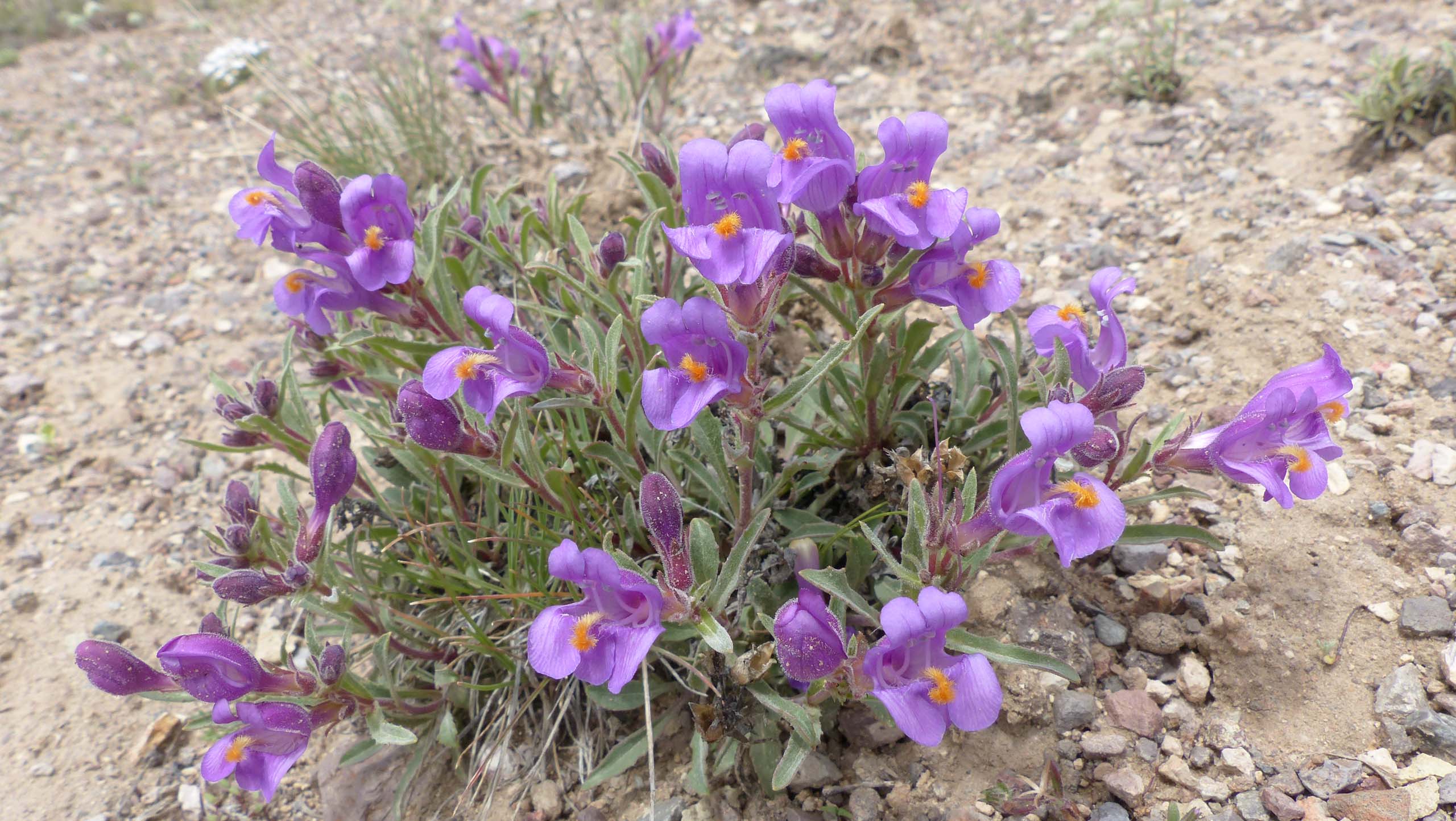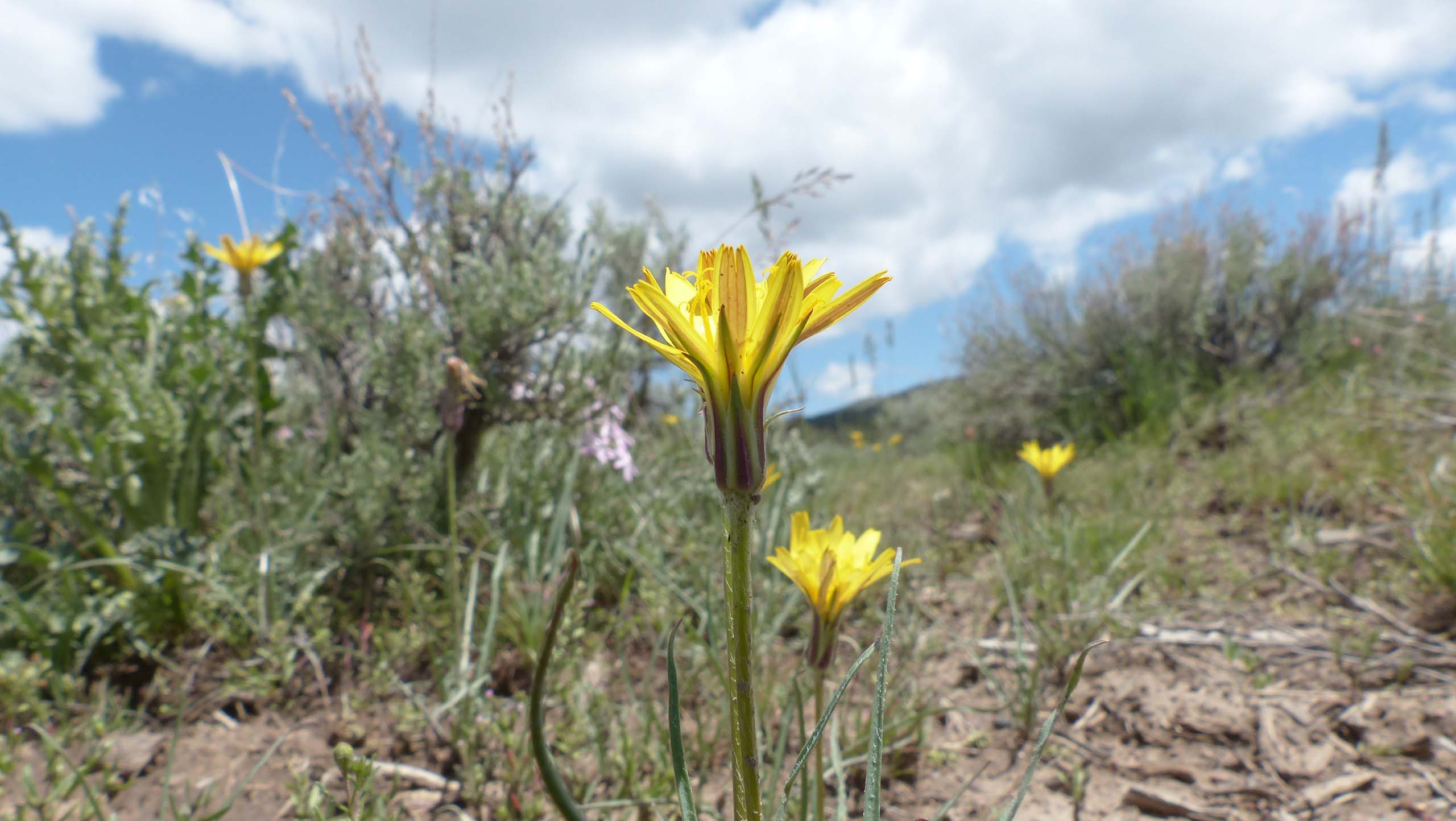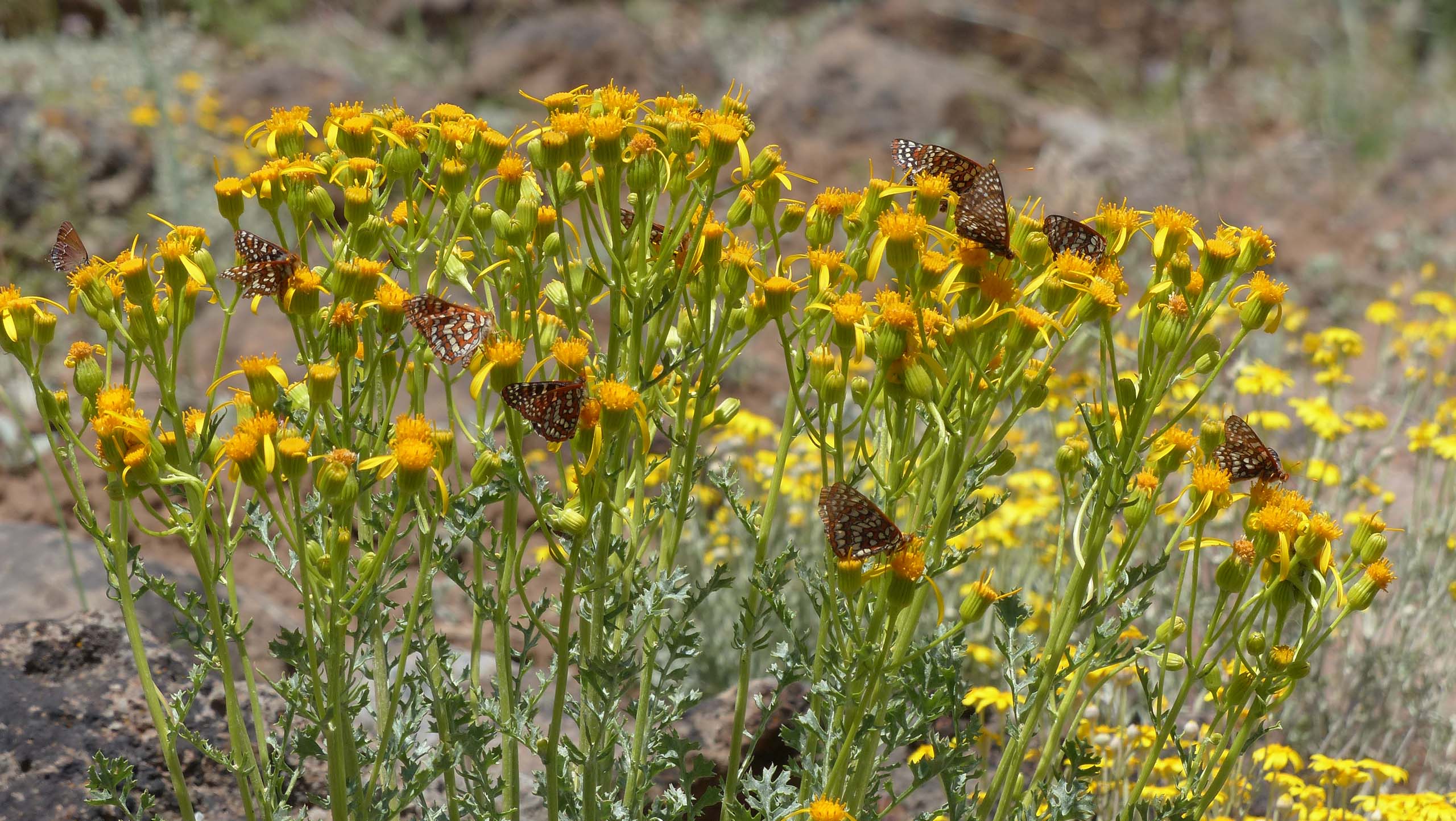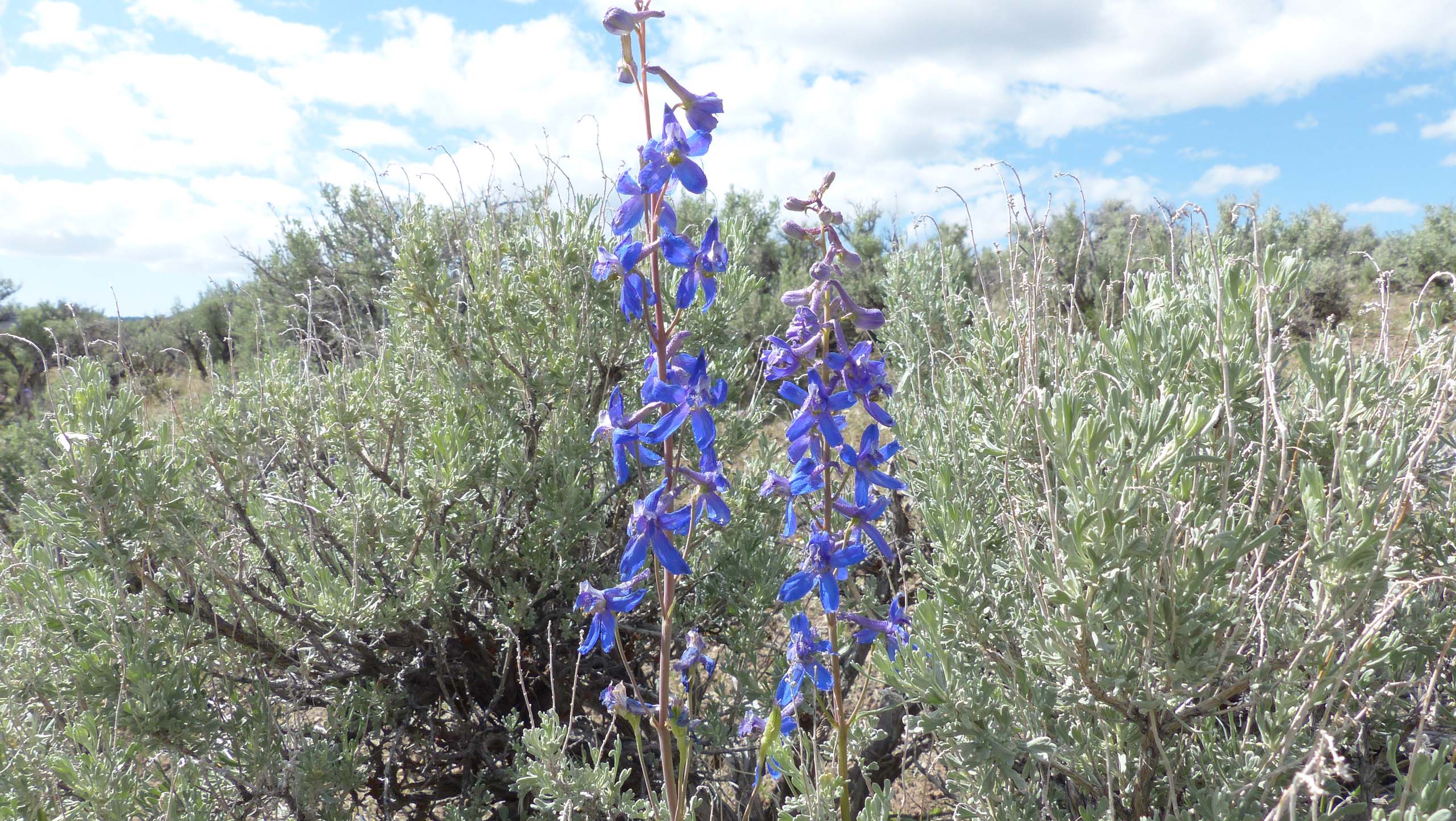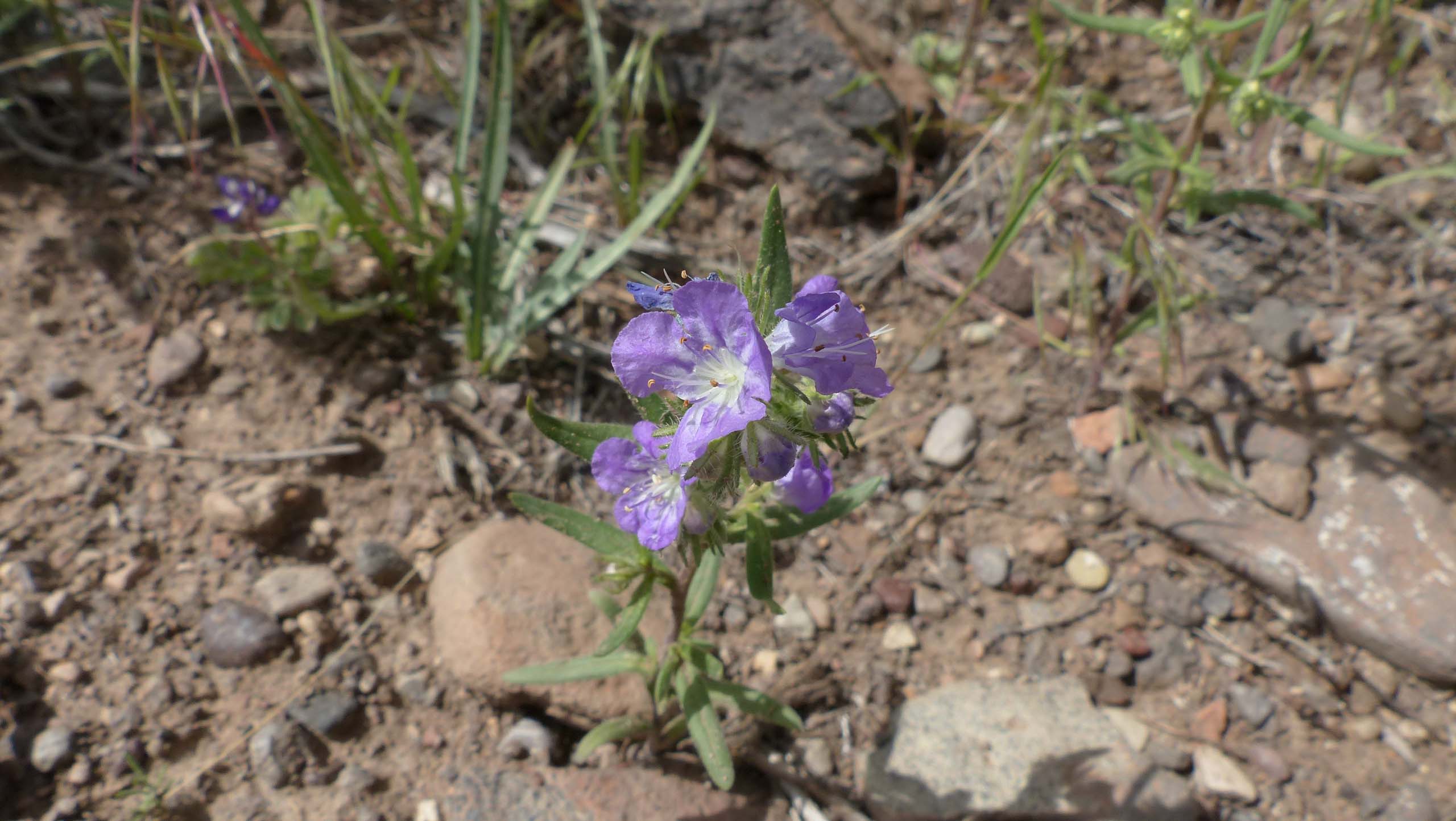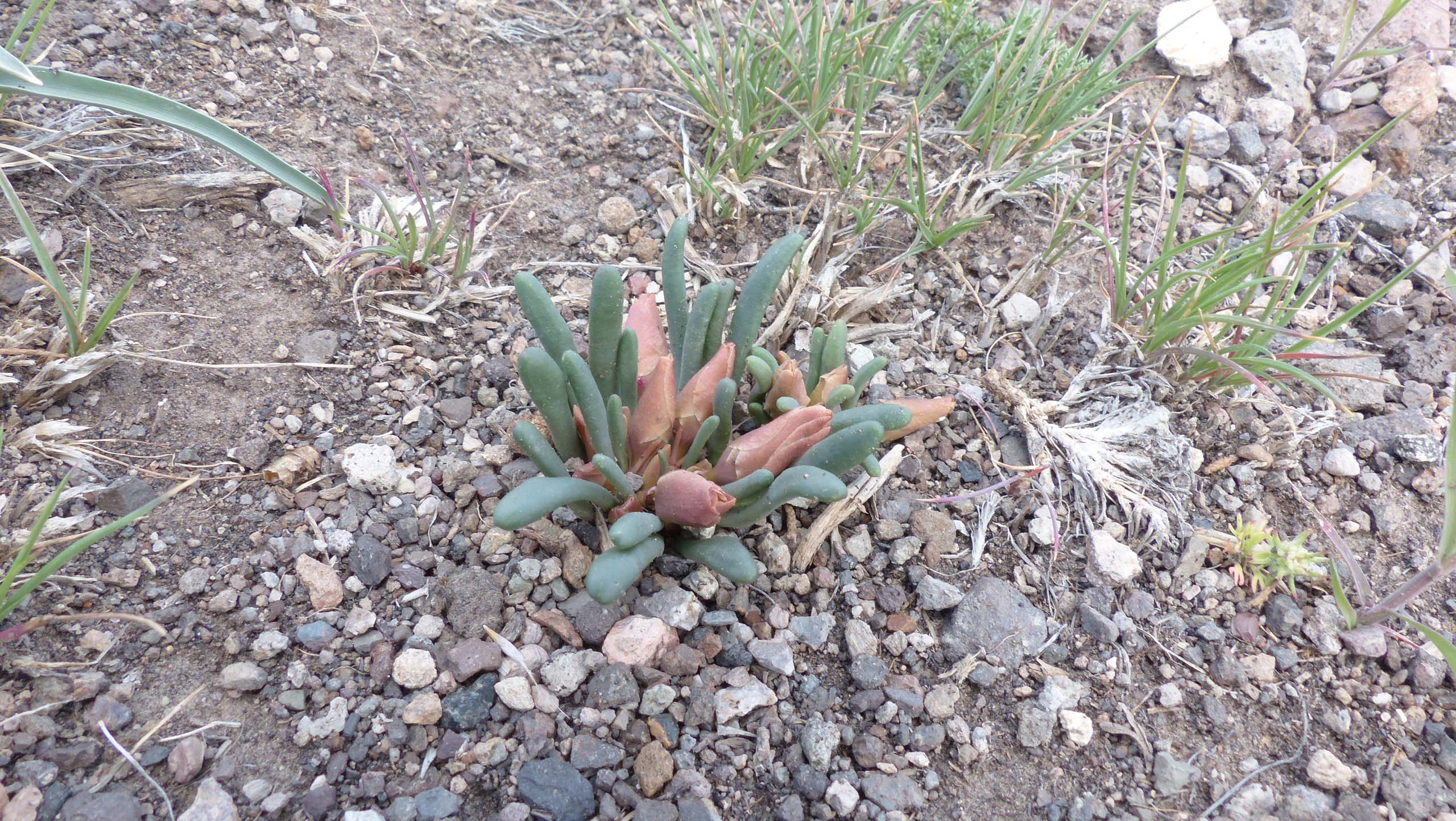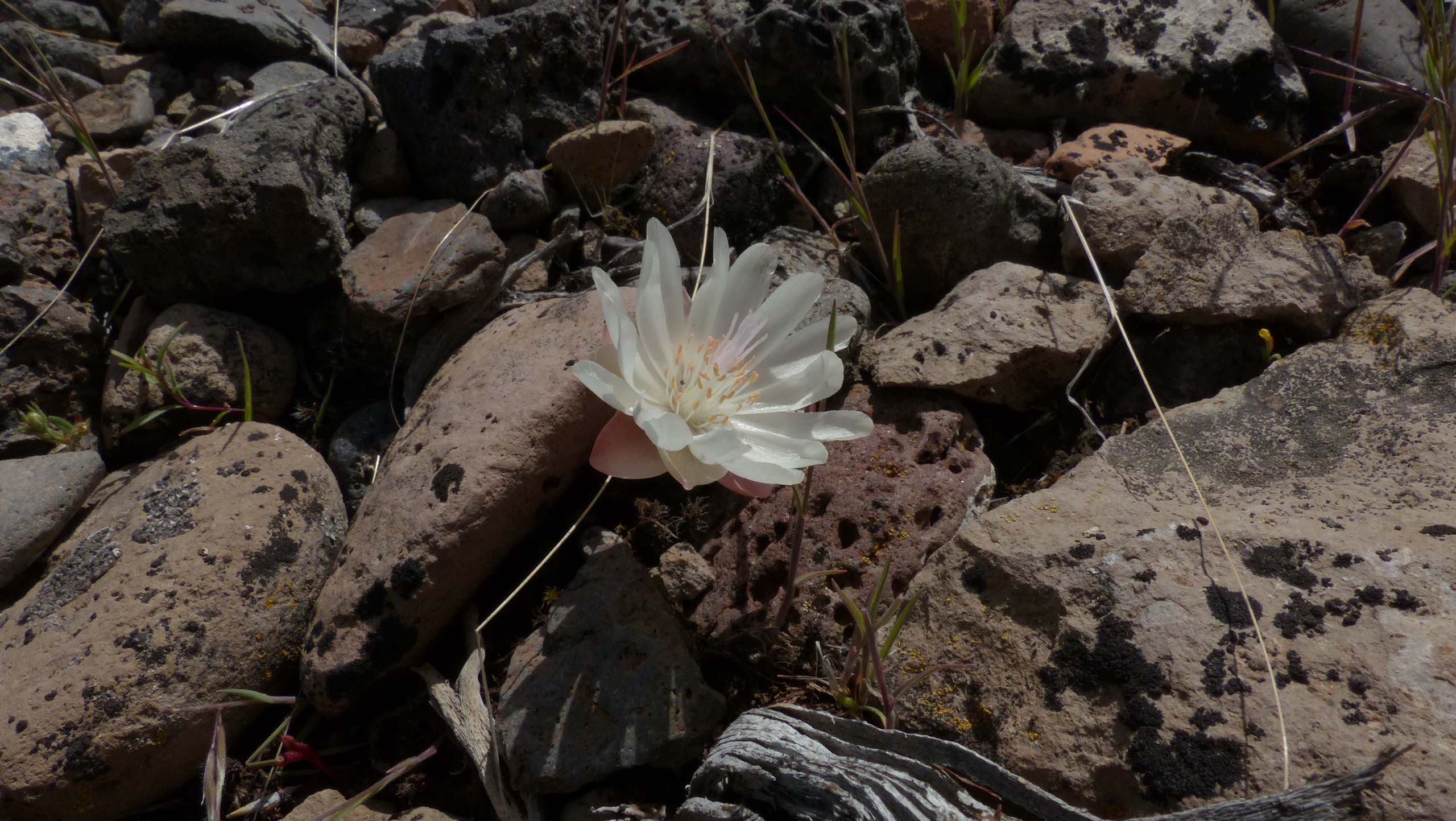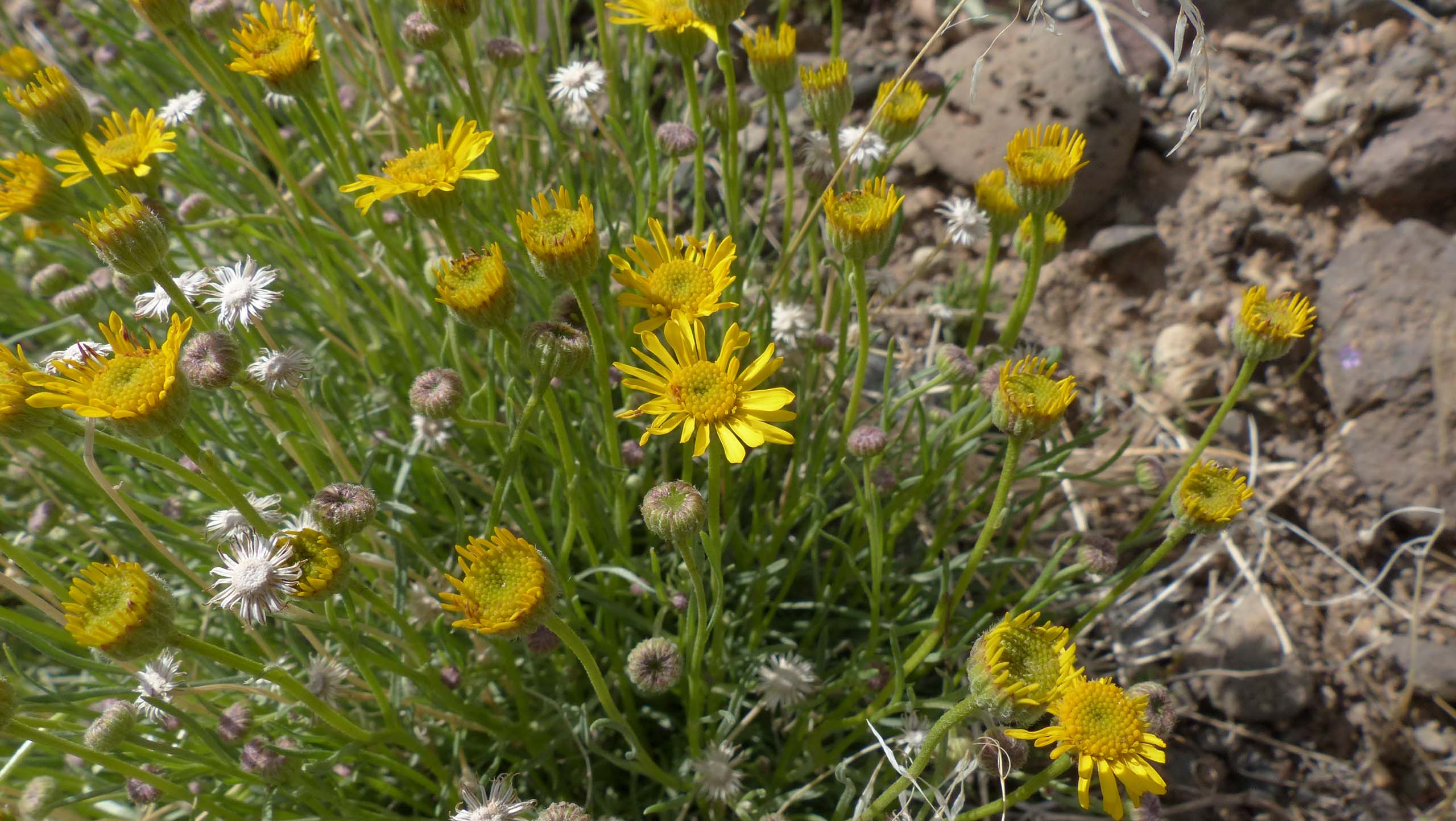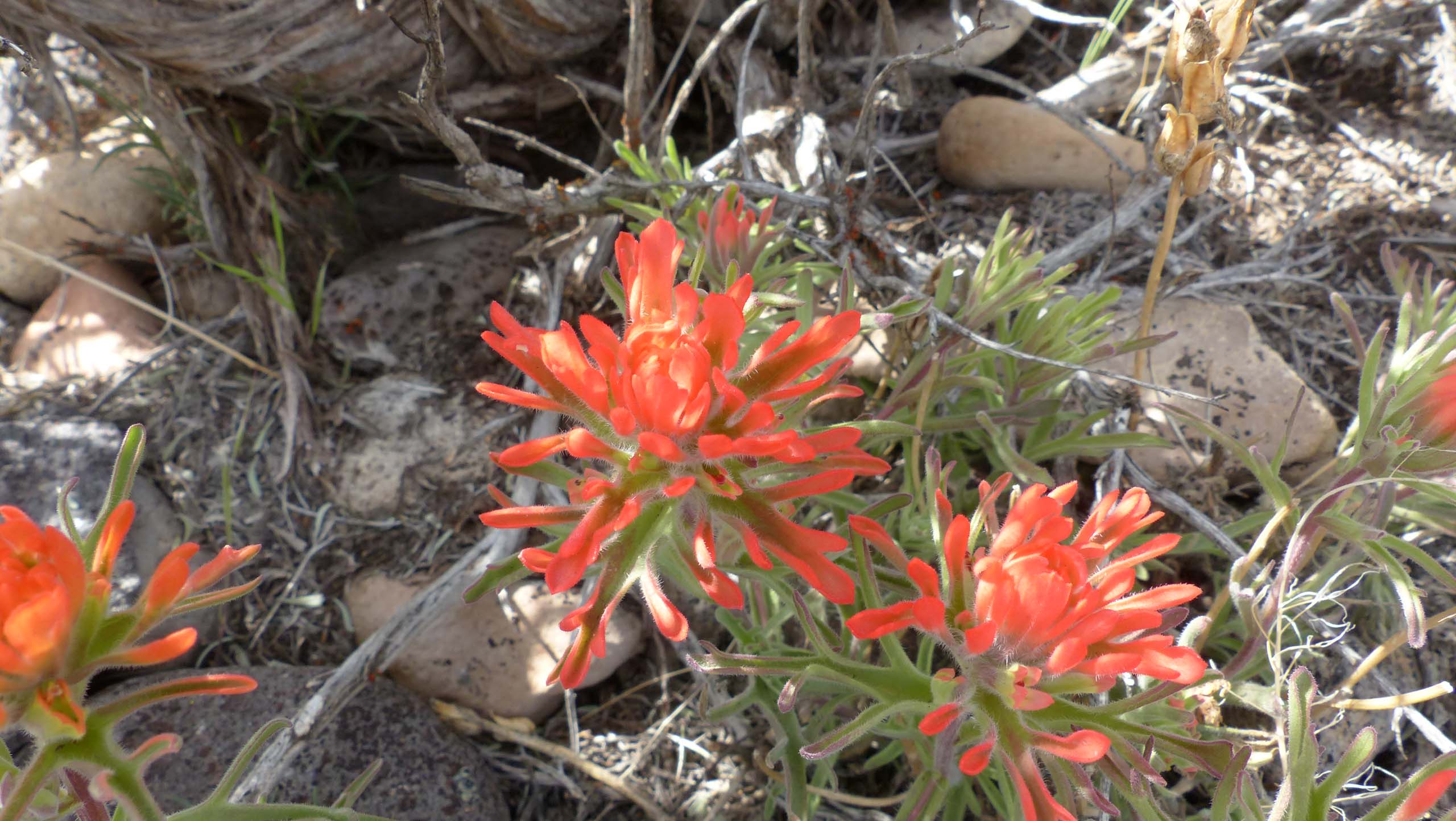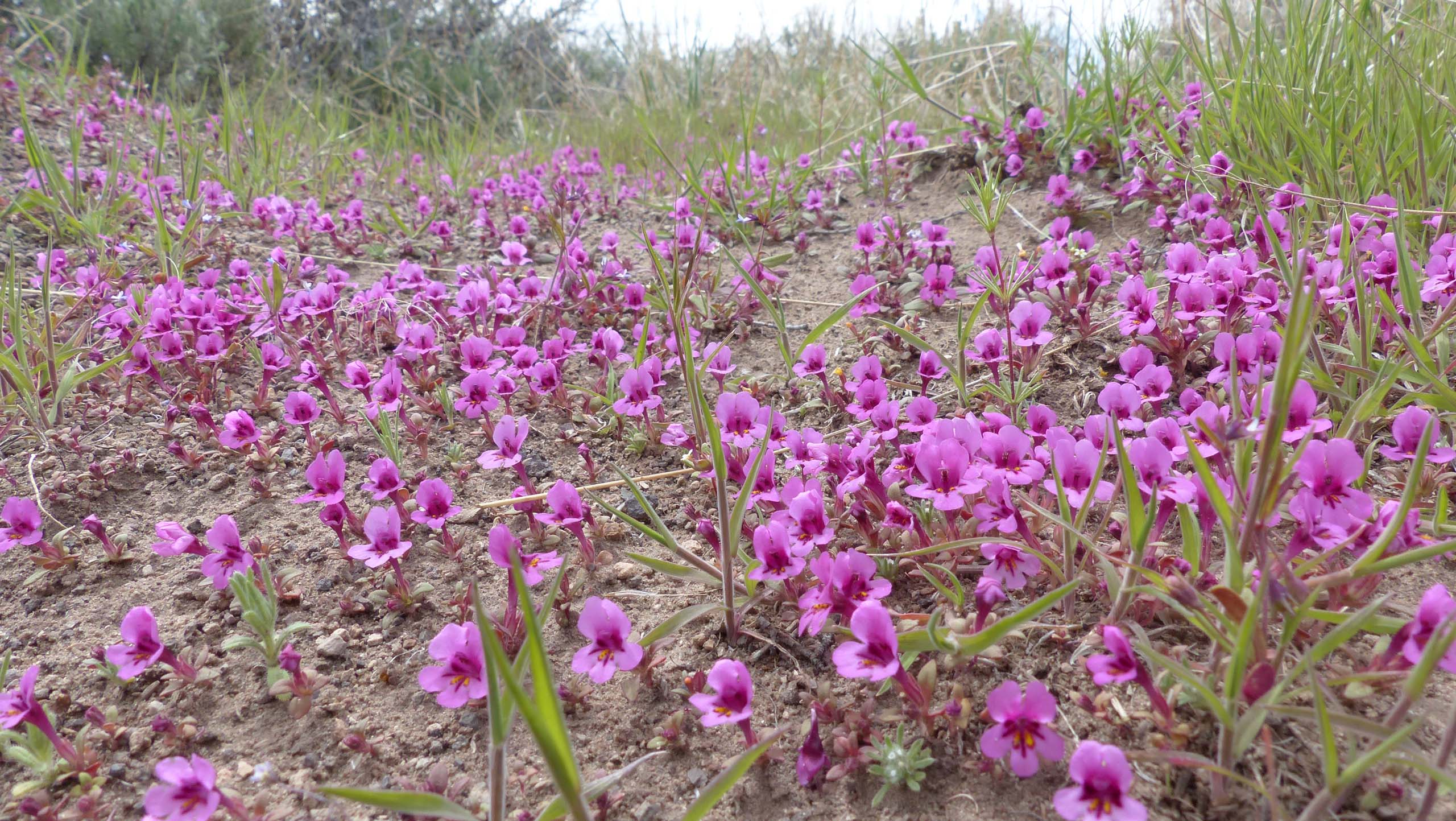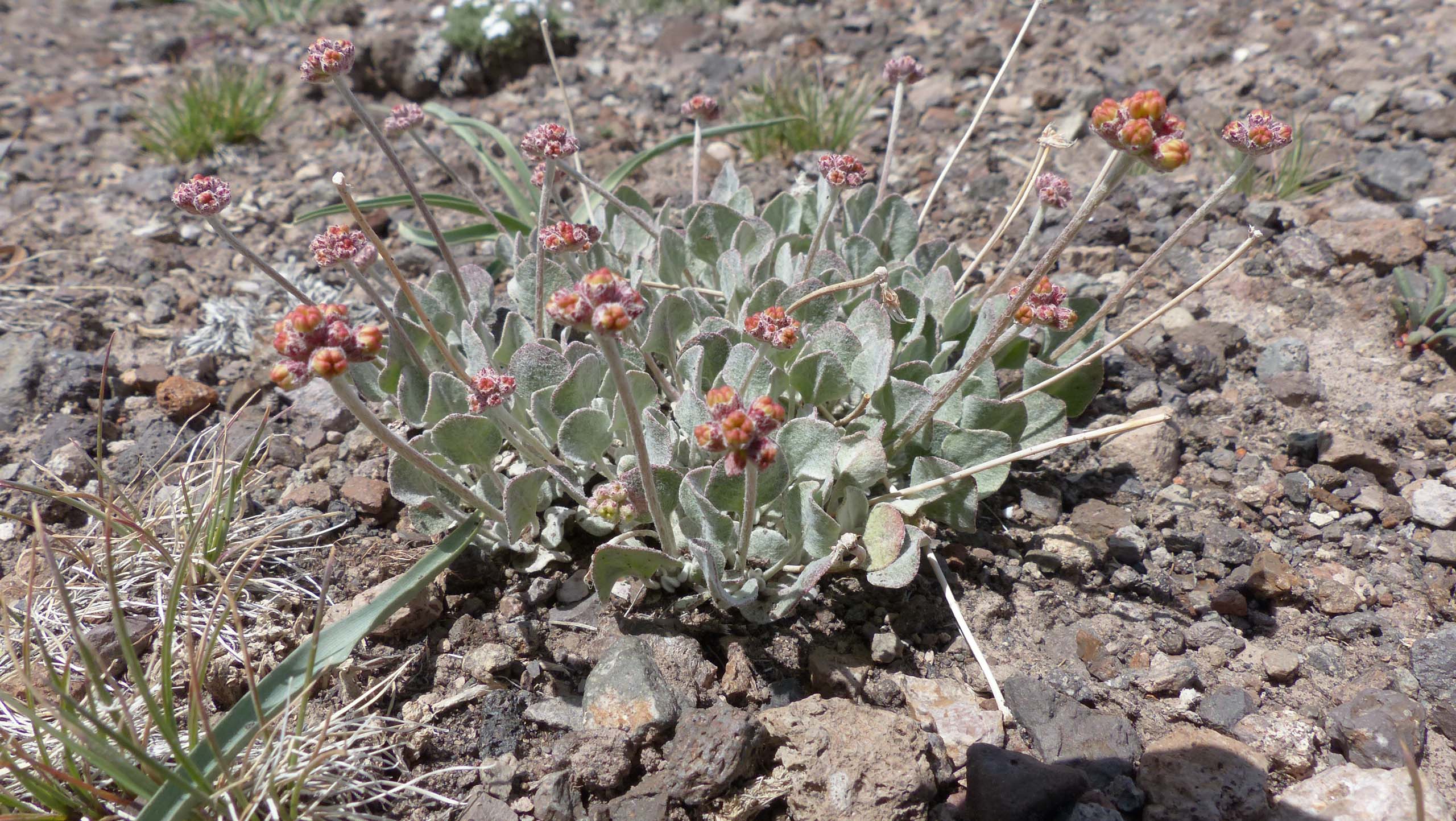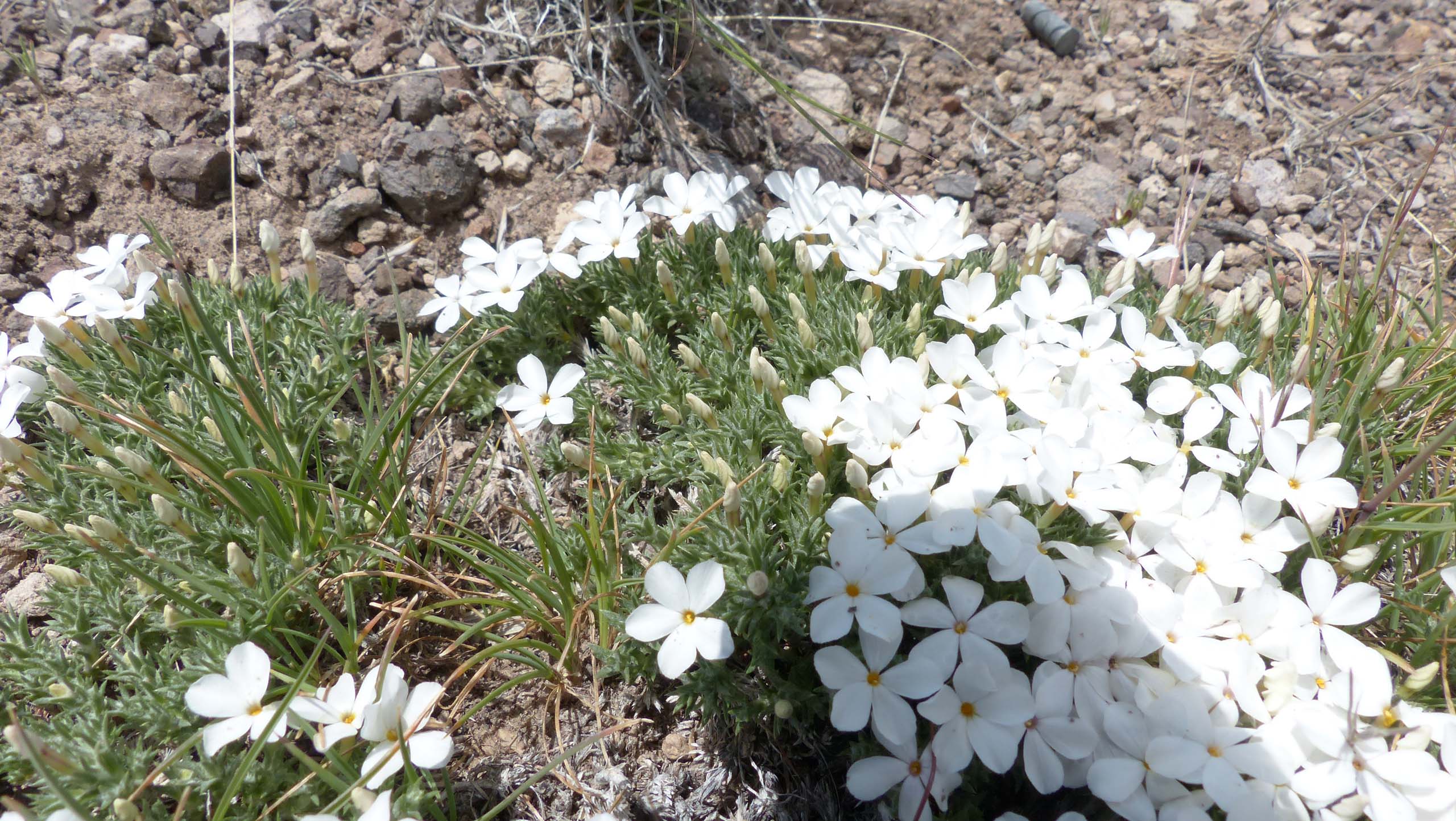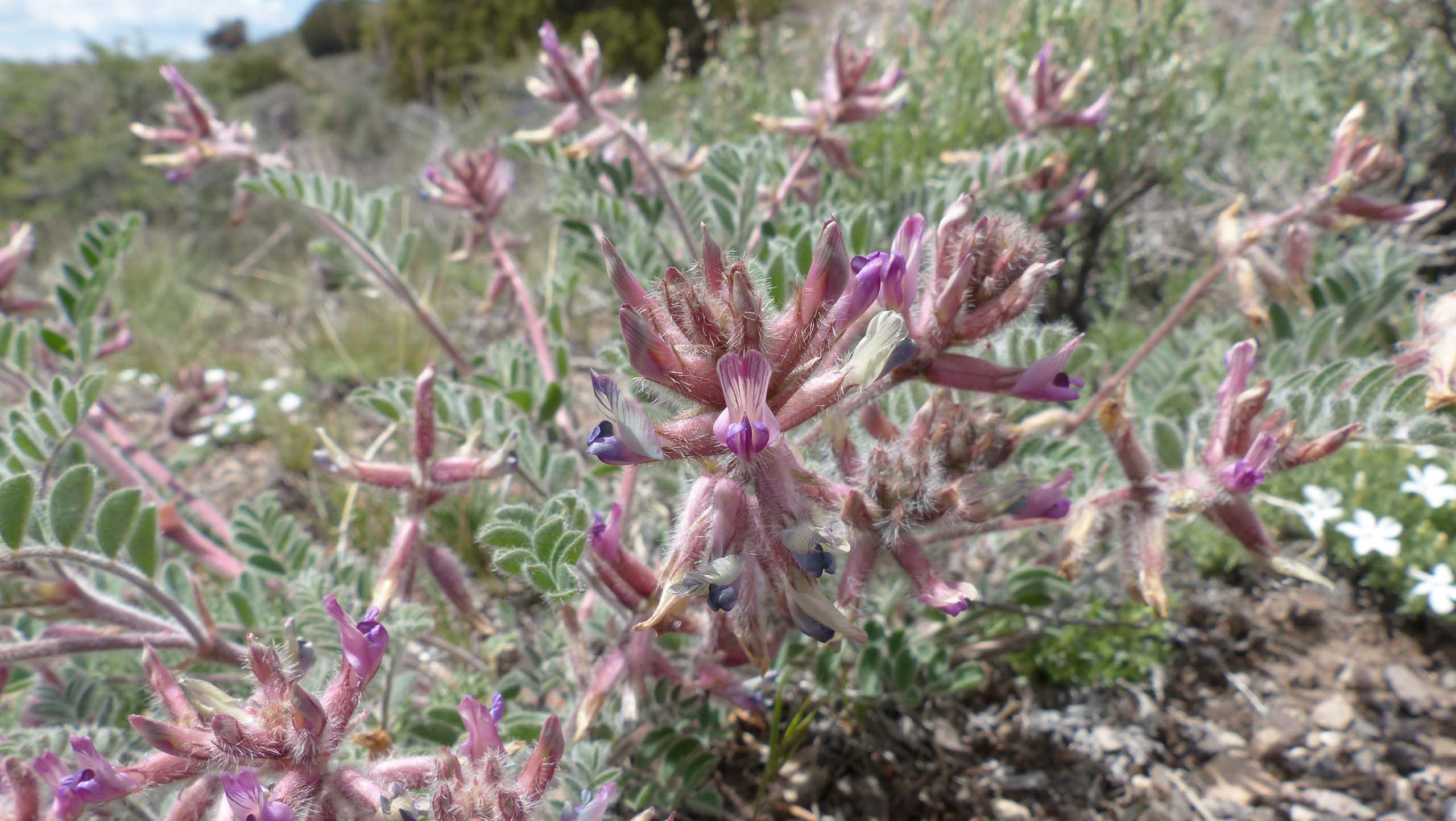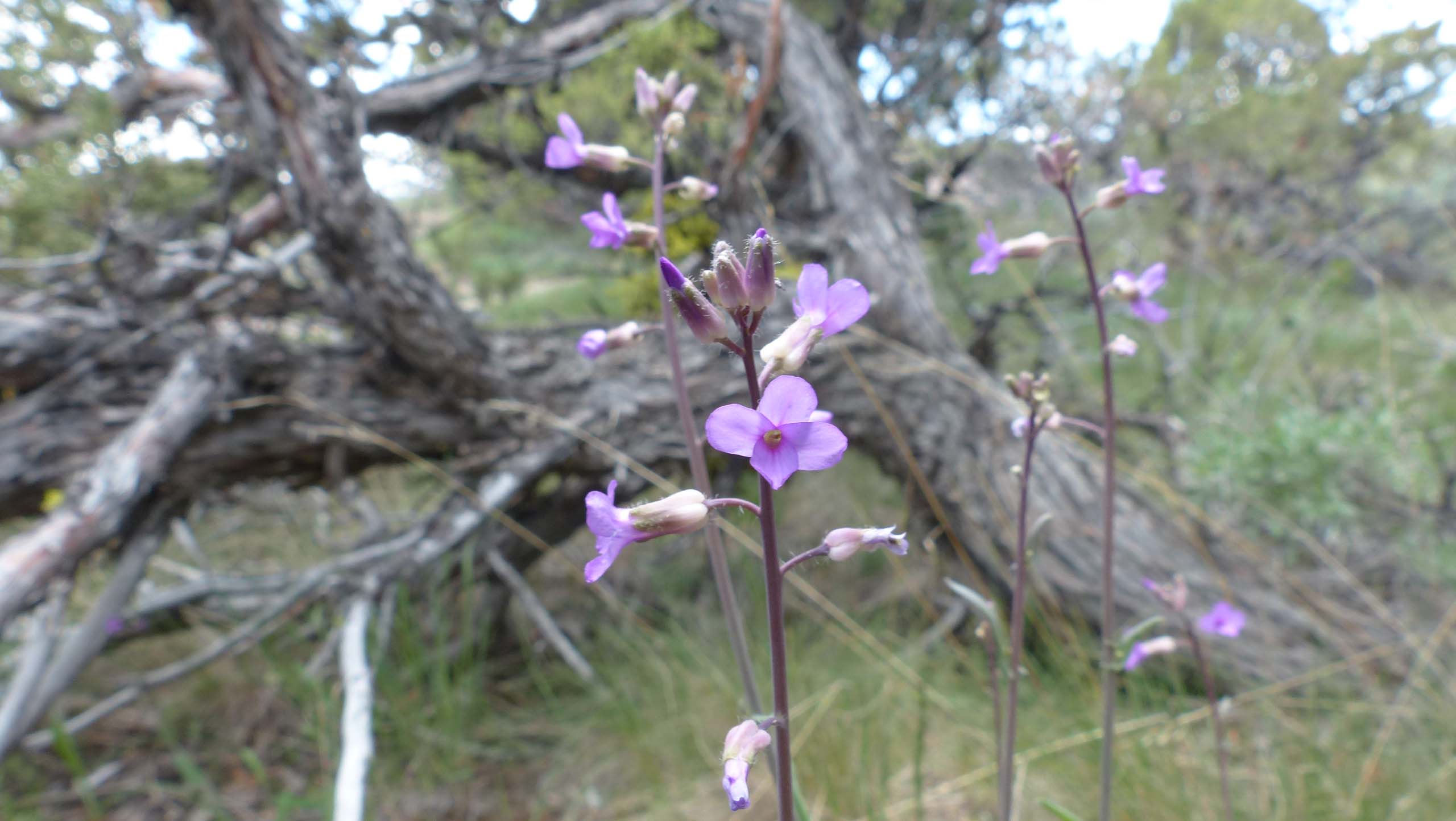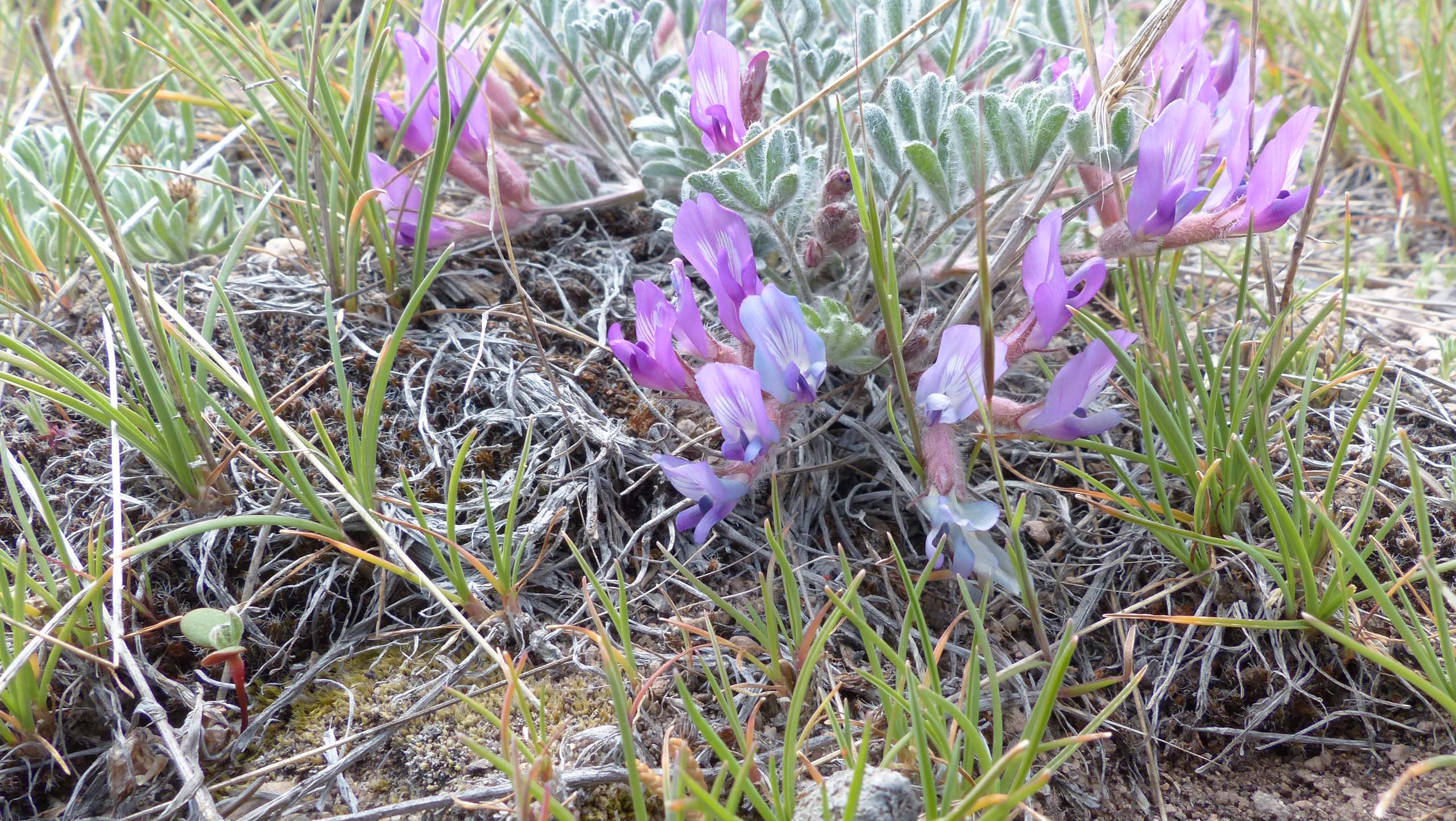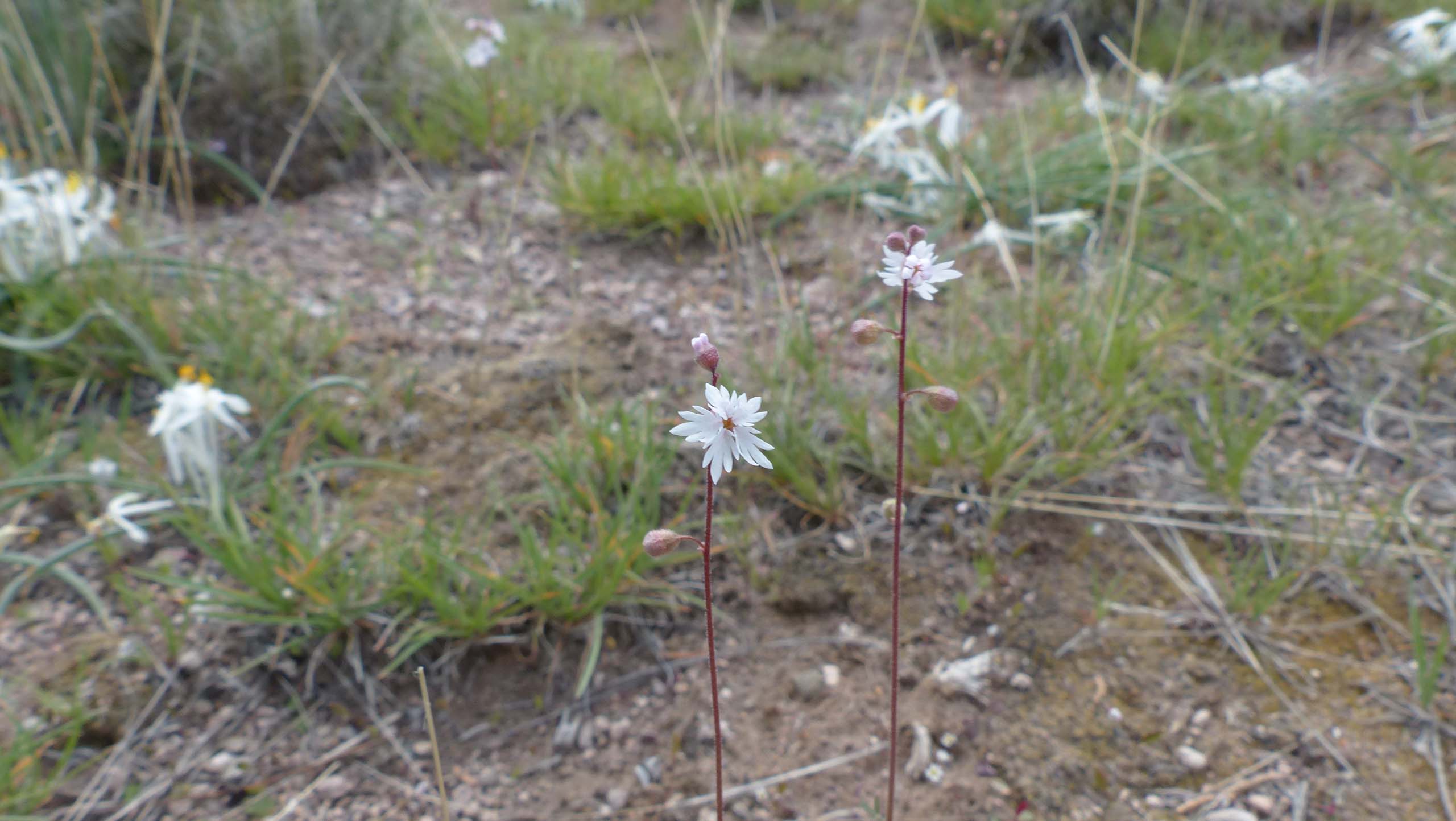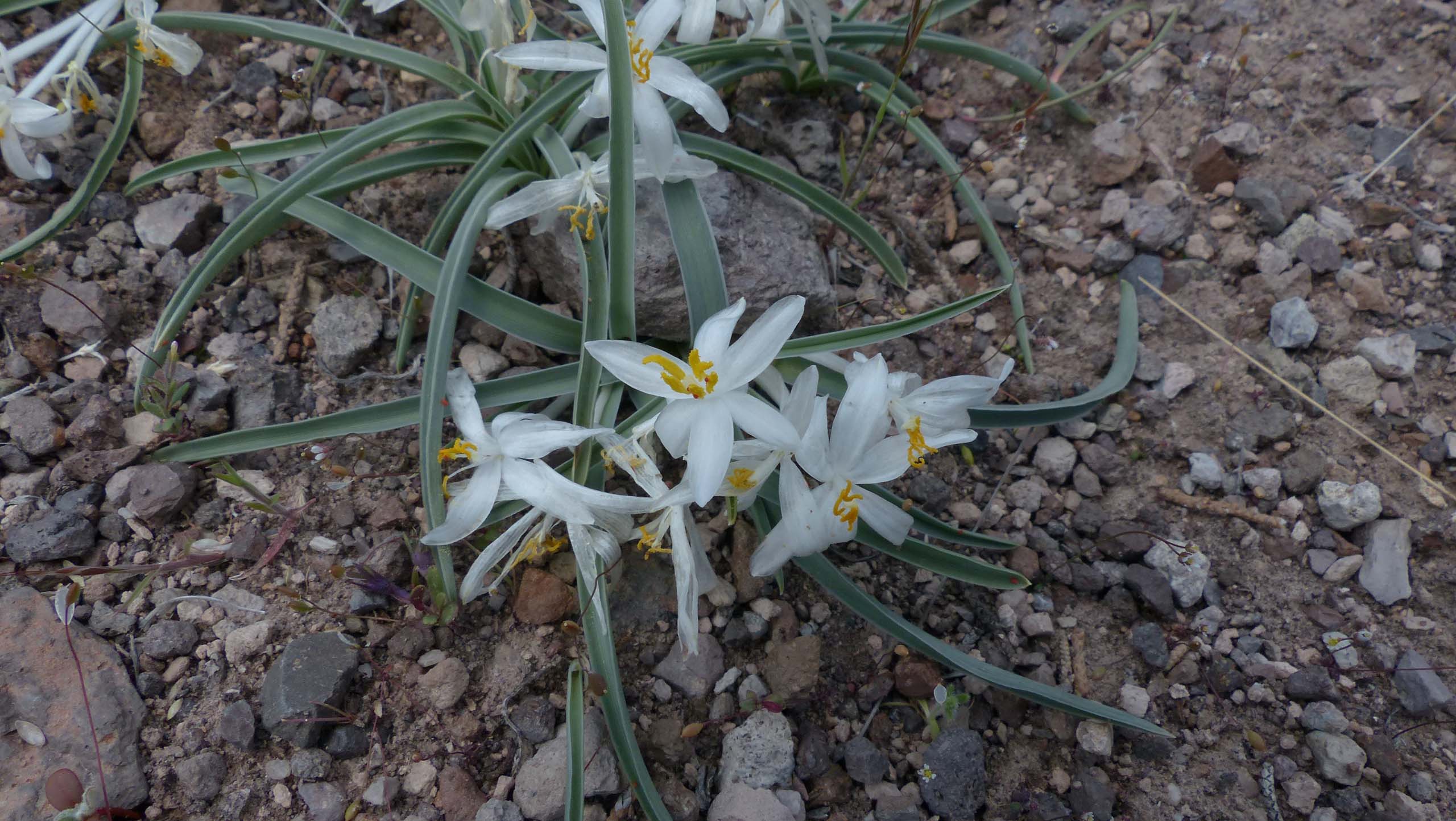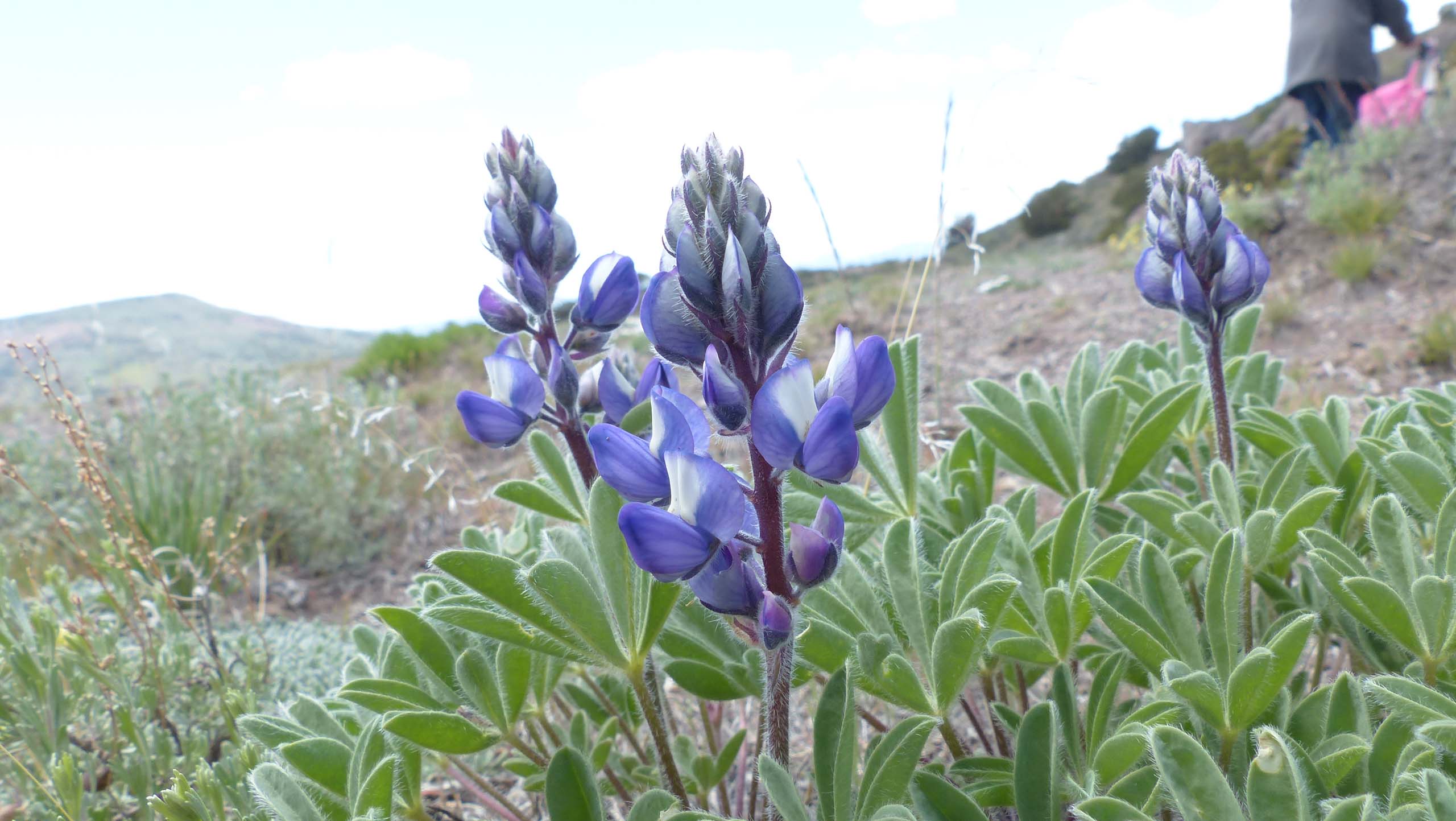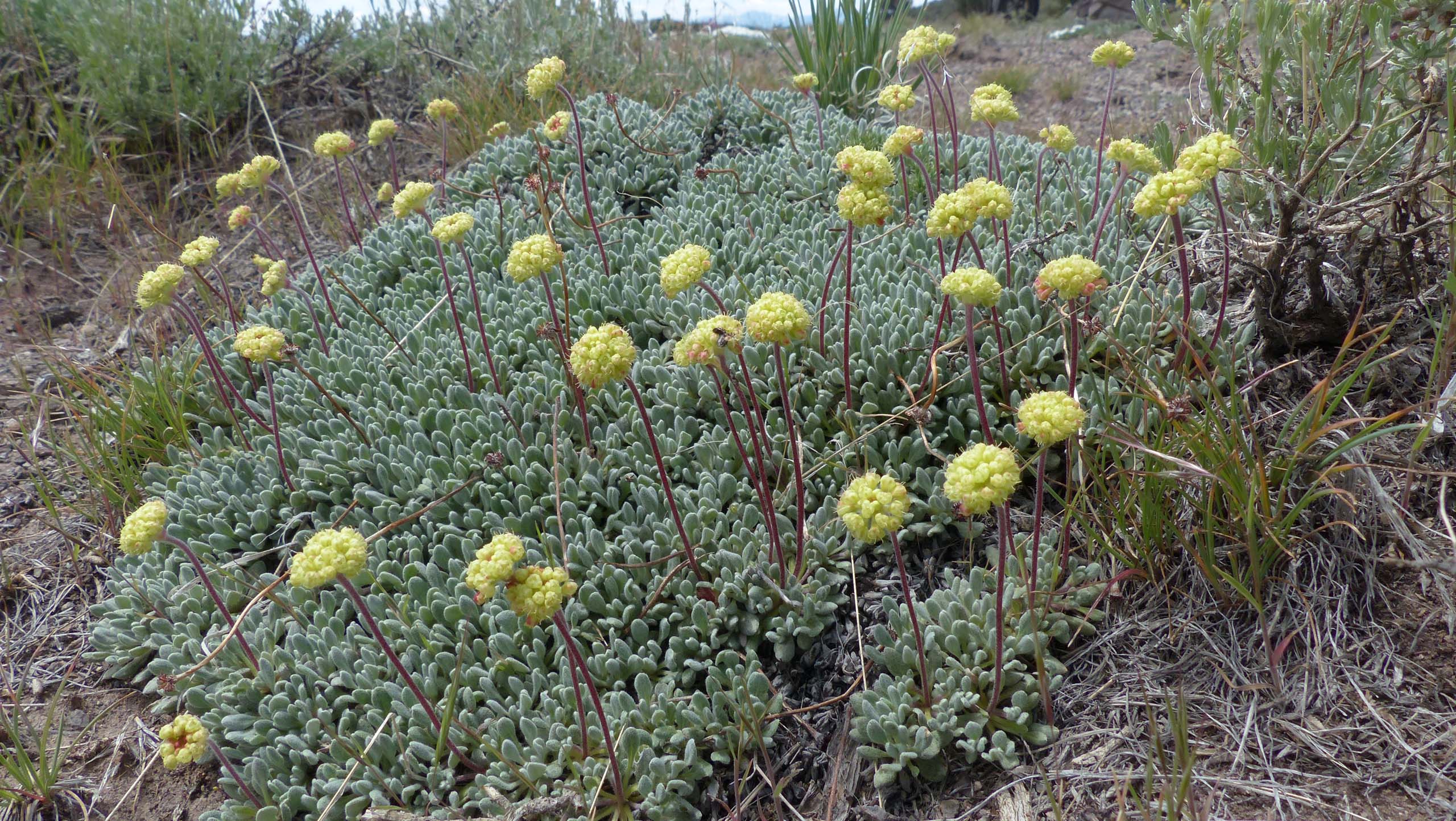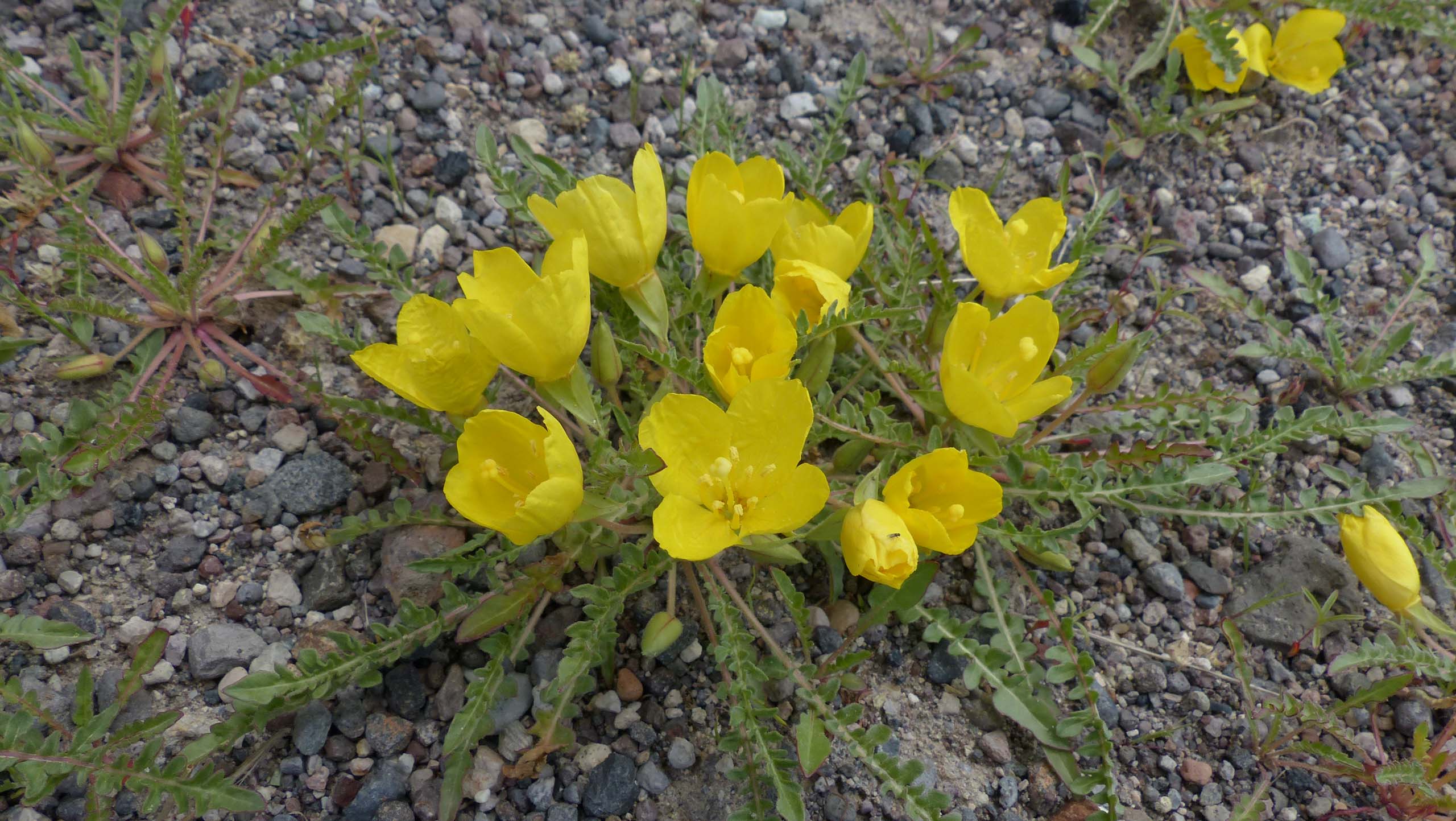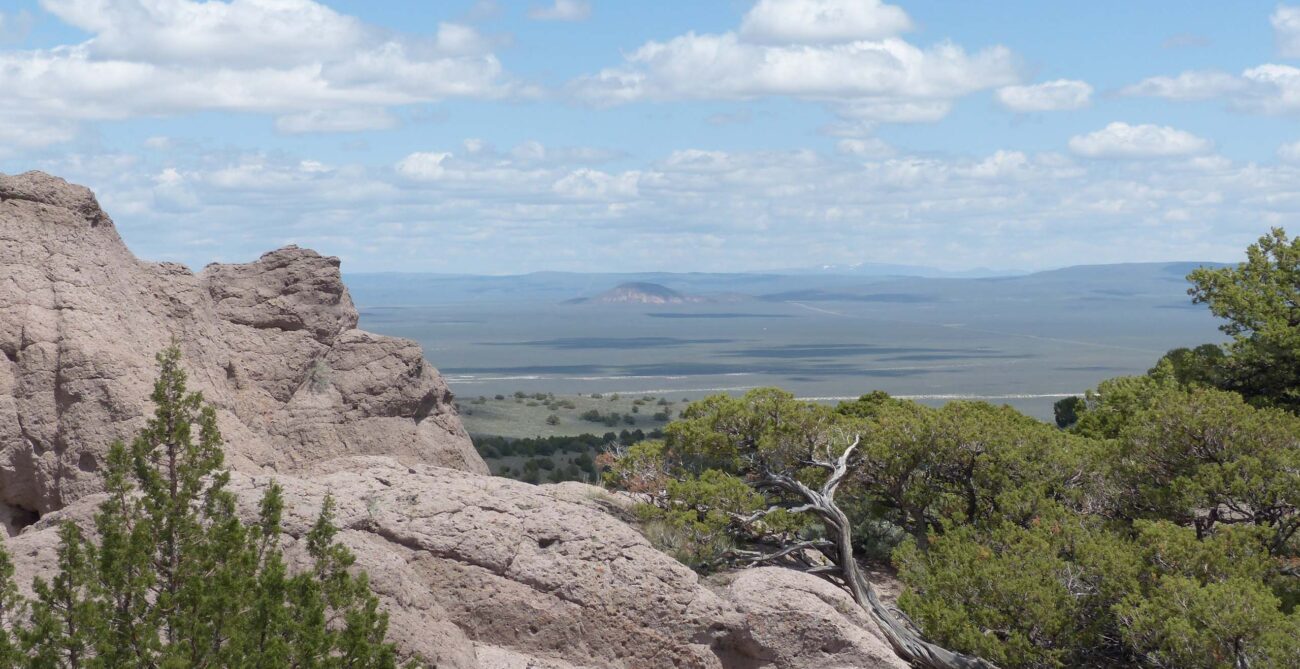
With late spring weather in the desert being day after day of wet thunderstorms, we were anxious to be on our way to our favorite haunts in northwestern Nevada. We finally made our first trip of the season on June 2, and it was well worth the wait. Our trips in the desert are road trips with stops along the way when we see something of interest.
Hop on California State Route 299 (Hwy 299) and head east. As you approach Cedarville, be sure to look on the north side of the highway for Piper’s devil’s-lantern, Oenothera deltoides ssp. piperi.
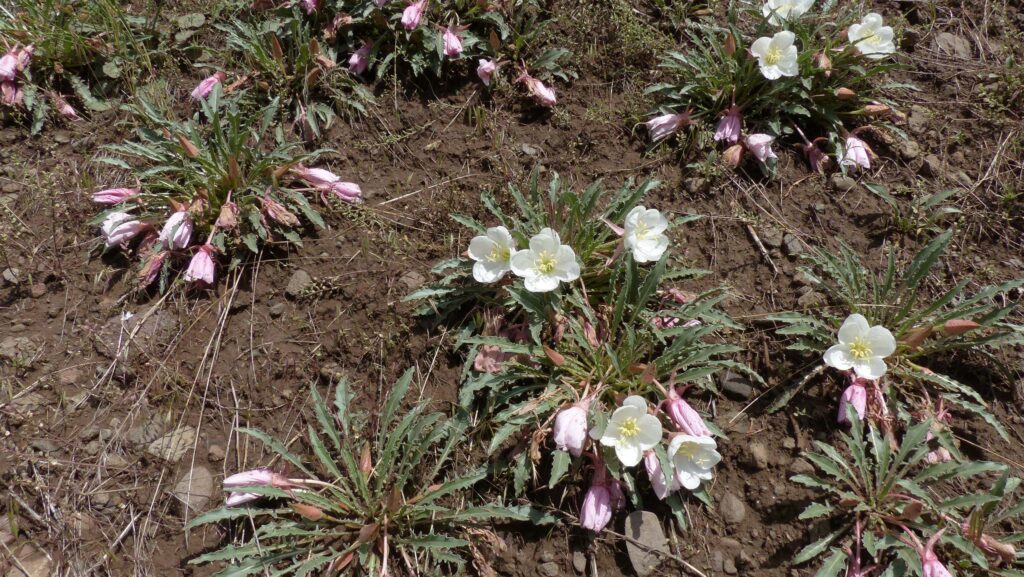
These plants are about 1.5 miles before you enter Cedarville. We always fill the gas tank and check the tires before continuing east on Hwy 299. You will know you are in Nevada when the blacktop turns to gravel.
Hwy 299 turns into Nevada State Route 8A (NV8A) as you leave California. About two miles into Nevada, hop-sage, Grayia spinosa, was blooming everywhere.
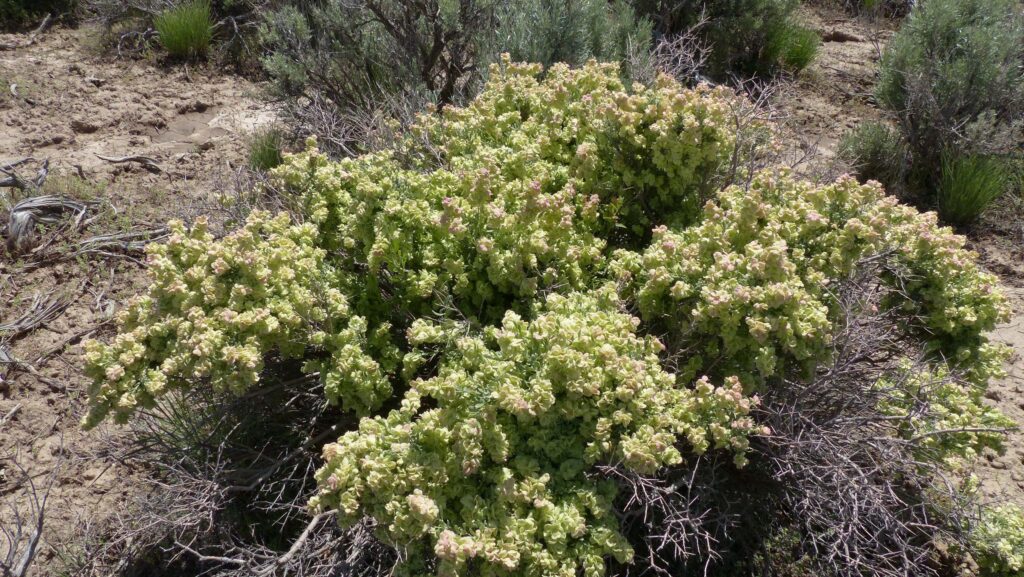
At about five miles along NV8A, Stansbury’s phlox, Phlox stansburyi, caught our eye.
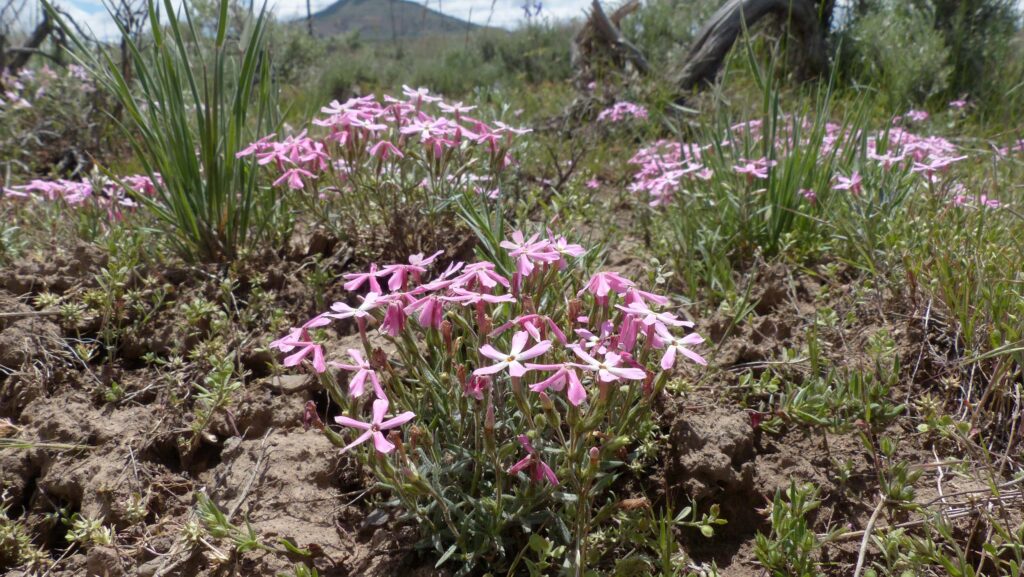
A bunch of Janish’s beardtongue, Penstemon janishiae, appeared at about 6.5 miles on the north side of NV8A, causing an immediate stop. We don’t see this plant every year but, when conditions are right, it puts on a show.
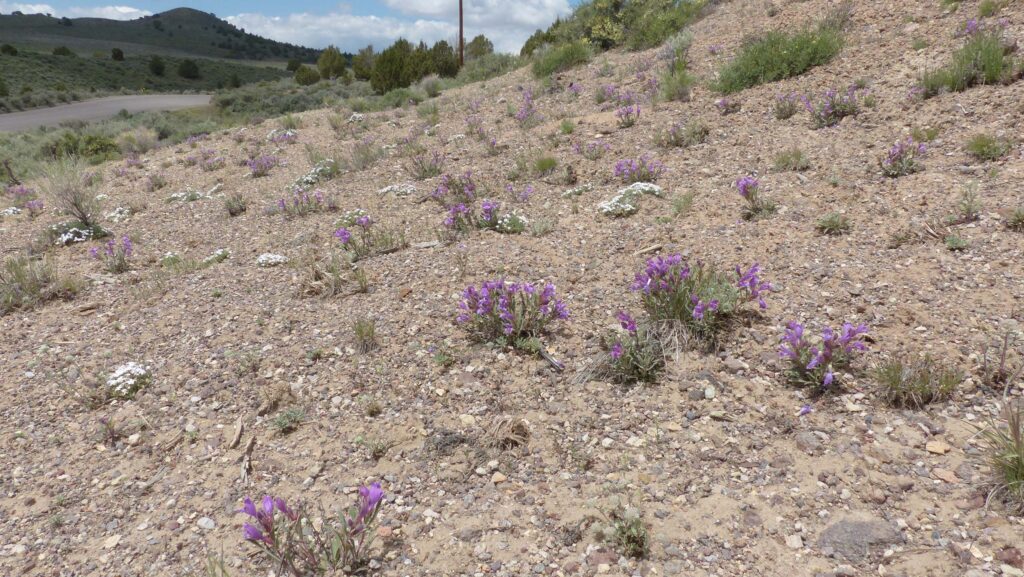
A bit past 7.5 miles, make a left turn onto Dugway Road and continue to the top of the grade, about 0.5 miles. Turn left (north) onto a two-track road, park, and walk. This trail/road dead ends in about a mile at an elevation of 6500 feet. There are many high desert species found along this trail, especially at the end of the trail, on the high gravelly knolls among the volcanic tufa.
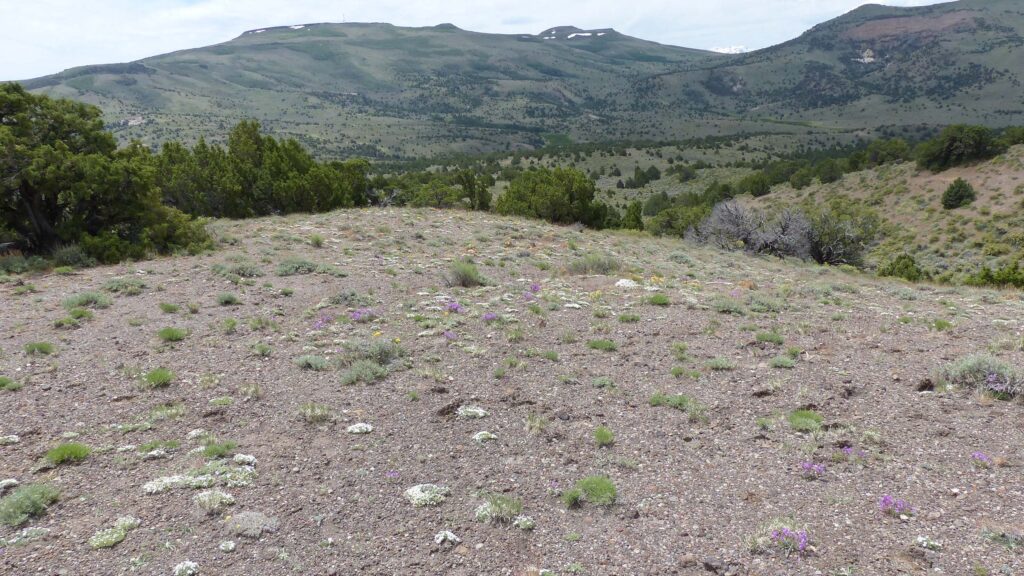
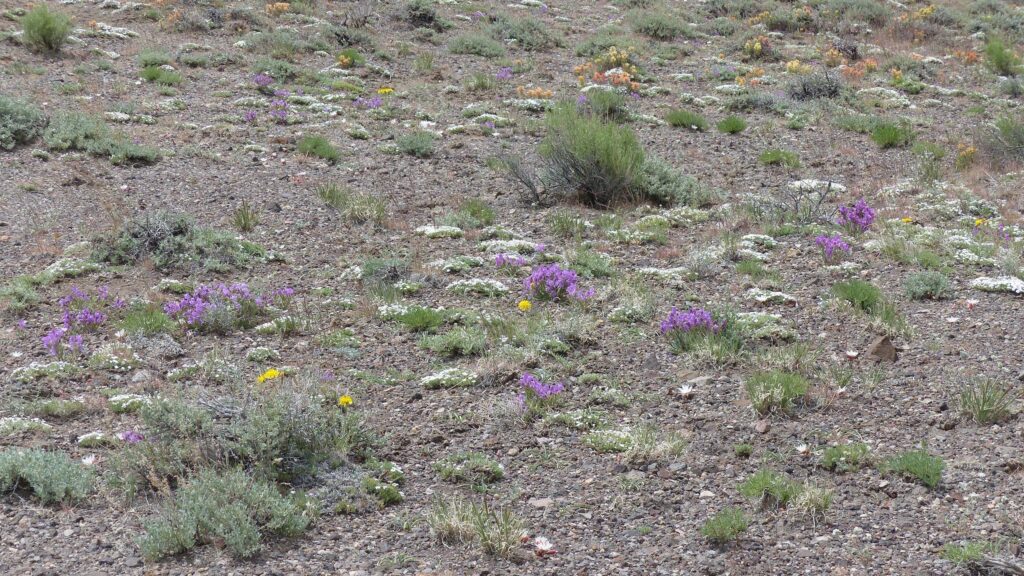
On this trip, we had planned on having lunch at BLM’s Divine Springs Campground just past Home Camp on Hays Canyon Road. However, the road across the alkali flats on Home Camp Road still had water on it and was impassable. We opted for lunch on a small mesa along Home Camp Road.
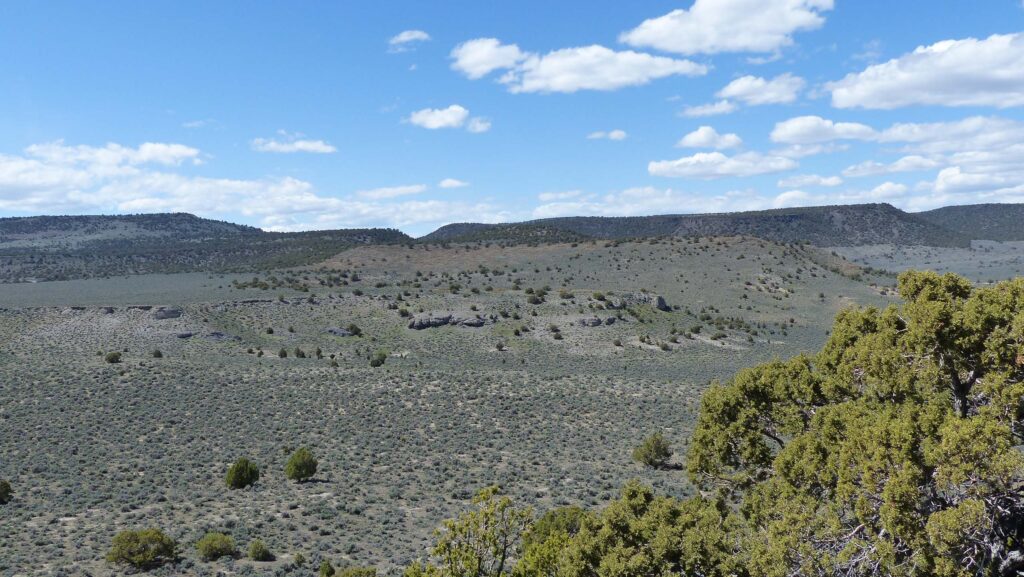
Photo taken by Paul Davis on June 2, 2023.
There were lots of great desert plants here, including the very small, short-stemmed lupine (Lupinus brevicaulis).
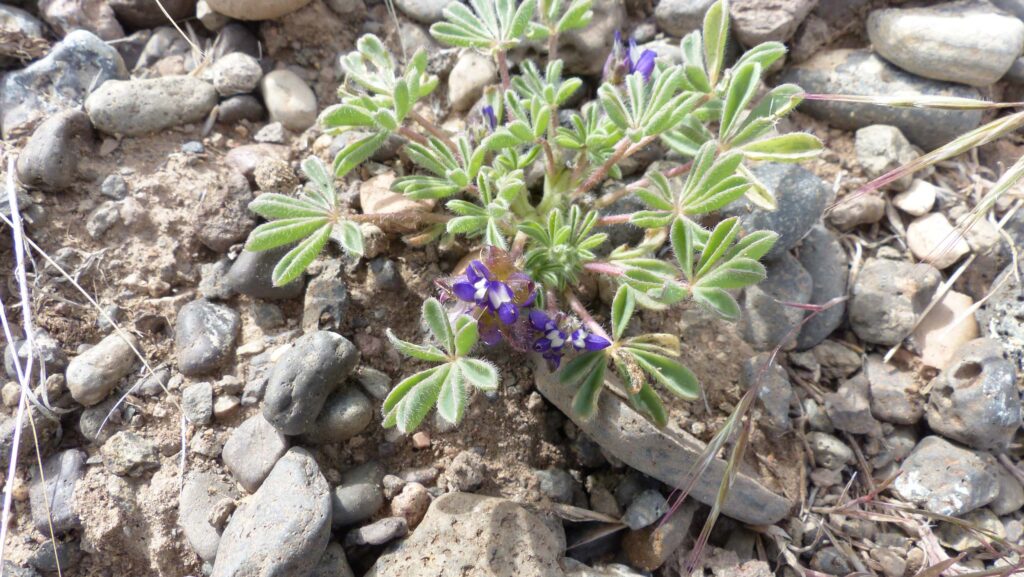
This trip is part of a wonderful 65-mile round trip that is doable in a day but could take several days of exploration with the BLM Divine Springs Campground as a base camp. A high-clearance four-wheel-drive vehicle, good tires, lots of water (none at the campground), and plenty of gas are required.
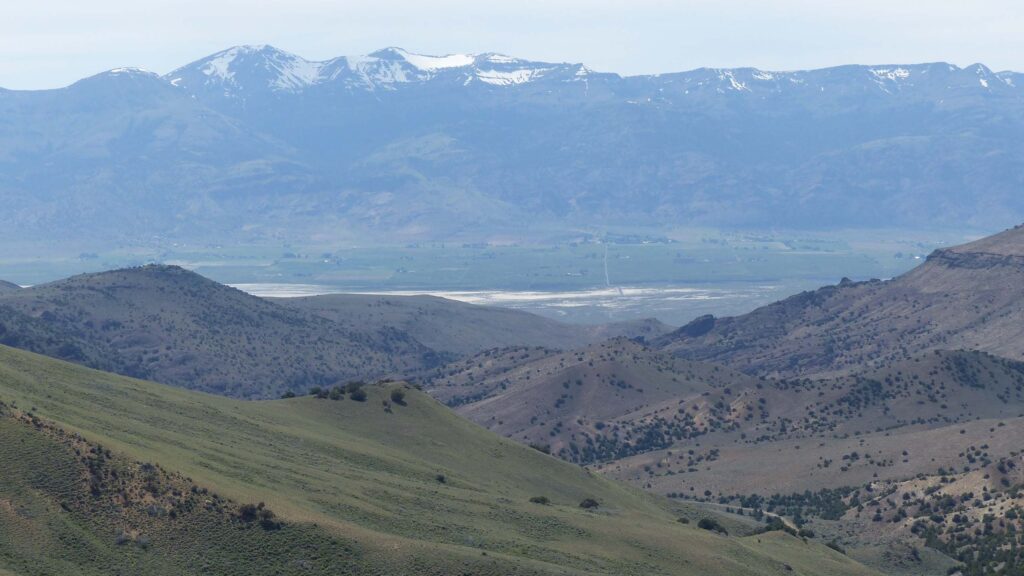
Photo taken by Paul David on June 6, 2018.
Here’s a slide show of some of the high desert species that we found in bloom. All photos by Paul Davis. Enjoy! ~Paul Davis

